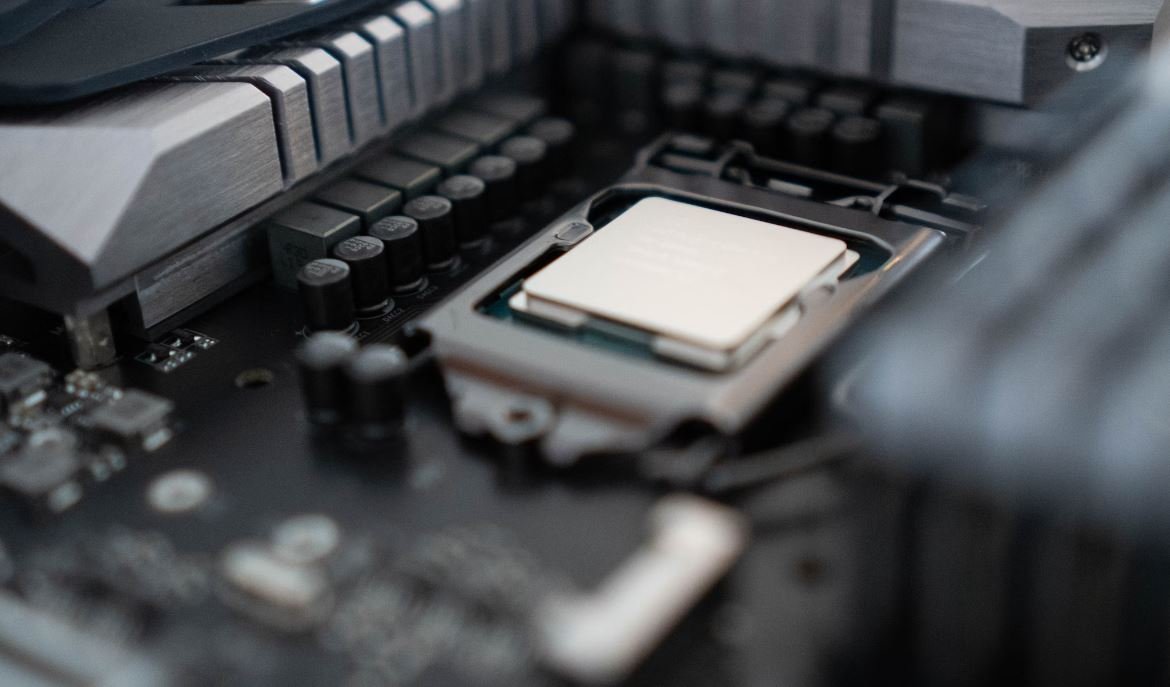OpenAI GPT Paper: Future of Artificial Intelligence
Artificial Intelligence (AI) has made significant strides in recent years, with OpenAI’s Generative Pre-trained Transformer (GPT) leading the way. GPT-3, the latest version of this language model, has amazed the world with its ability to generate human-like text and perform a wide range of tasks. In this article, we will delve into the OpenAI GPT paper that describes the architecture, applications, and implications of GPT-3 and its potential impact on various industries.
Key Takeaways:
- GPT-3 is an advanced language model developed by OpenAI that has gained significant attention for its ability to generate human-like text.
- It employs a transformer architecture, allowing it to process large amounts of text data and generate coherent and contextually relevant responses.
- GPT-3’s potential applications span a wide range of fields, including content generation, language translation, virtual assistants, and more.
- While GPT-3 displays impressive capabilities, it also raises concerns about potential misuse, bias, and the challenge of maintaining ethical use.
The OpenAI GPT-3 paper outlines the state-of-the-art model’s architecture and training methodology. GPT-3 is built upon a transformer neural network architecture, which leverages self-attention mechanisms to generate accurate and coherent text. With its ability to process vast amounts of training data, GPT-3 achieves remarkable results in language-related tasks.
One interesting aspect of GPT-3 is its ability to comprehend and generate contextually relevant text. This model is pretrained using large-scale datasets, enabling it to learn grammar, facts, and even reasoning abilities. As a result, GPT-3 can understand complex prompts and generate coherent responses, mimicking human-like conversations.
Applications of GPT-3
GPT-3’s potential applications are vast and promising. The paper highlights several areas where the model showcases exceptional performance. These include:
- Content Generation: GPT-3 can generate high-quality articles, essays, code, and even stories, showcasing its potential in assisting content creators and streamlining content production.
- Language Translation: With its ability to understand and generate text in multiple languages, GPT-3 could revolutionize language translation, making it faster and more accurate.
- Virtual Assistants: GPT-3 demonstrates remarkable skills in engaging conversations and providing contextually relevant information, posing the potential to enhance virtual assistants’ capabilities.
Implications and Concerns
While GPT-3 is an incredibly powerful language model with vast potential, it also raises concerns and ethical considerations:
- GPT-3’s biases:
- Misuse of GPT-3:
- Ethical considerations:
| Concern | Solution |
|---|---|
| GPT-3 might unintentionally generate biased or offensive content. | OpenAI emphasizes the importance of continued research and development to address these biases and reduce potential harm. |
| Concern | Solution |
|---|---|
| GPT-3 could be used to generate misinformation, deepfake content, or propagate harmful narratives. | OpenAI stresses the need for responsible deployment of the technology and encourages developers to consider the potential risks and ethical implications while integrating GPT-3 into applications. |
| Concern | Solution |
|---|---|
| GPT-3 could potentially amplify existing societal biases. | OpenAI acknowledges the importance of transparency, collaboration, and public input to ensure the technology benefits all and does not exacerbate inequalities. |
OpenAI’s GPT-3 paper introduces a groundbreaking language model with extraordinary capabilities. Its potential applications span various fields, revolutionizing content generation, translation, and virtual assistant technology. However, the paper also emphasizes the need for careful development, addressing biases, and ensuring responsible use. As AI technology continues to advance, it is crucial to balance progress with ethics, driving towards a future where AI serves humanity in the best possible way.

Common Misconceptions
Paragraph 1
One common misconception about OpenAI GPT is that it is capable of fully understanding and comprehending the context in which it generates its responses. While GPT models have significantly advanced in generating human-like text, they do not possess true understanding or consciousness. They generate responses based on patterns and statistical relationships in the data they were trained on.
- OpenAI GPT models generate responses based on patterns and statistics.
- GPT models lack true understanding or consciousness.
- GPT models rely on the context they were trained on to generate text.
Paragraph 2
Another misconception is that OpenAI GPT possesses biases and prejudiced behaviors. While it is true that GPT models can sometimes exhibit biased behavior or generate biased text, it is not intentional. The biases can arise from the biases present in the training data. Efforts are being made to mitigate such biases and improve fairness in AI models, but it is important to acknowledge and address these challenges.
- GPT models may display biased behavior or text generation.
- Biases in GPT models arise from biases in the training data.
- Steps are being taken to mitigate biases and improve fairness in AI models.
Paragraph 3
A misconception surrounding OpenAI GPT is that it can replace human creativity and originality. While GPT models can generate highly creative and coherent text, they lack the ability to generate truly original ideas or concepts. They are limited to generating responses based on the patterns and examples present in the training data, and they do not have the capability for genuine creativity.
- GPT models can generate creative and coherent text.
- GPT models are restricted to patterns and examples in the training data.
- Original ideas and genuine creativity are beyond the capabilities of GPT models.
Paragraph 4
One misconception is that OpenAI GPT models are infallible and always provide accurate information. However, GPT models can sometimes generate incorrect or misleading responses. They are not perfect and can be prone to errors, especially when confronted with ambiguous or ambiguous queries. It is vital to critically evaluate the information provided by GPT models and cross-reference with reliable sources.
- GPT models are not infallible and can produce incorrect or misleading information.
- They may be prone to errors, particularly with ambiguous queries.
- It is important to cross-reference GPT-generated information with reliable sources.
Paragraph 5
Another common misconception is that OpenAI GPT models will replace human experts in various domains. While GPT models can provide valuable insights and generate useful text, they cannot completely replace human expertise. Human experts possess domain-specific knowledge, critical thinking skills, and subjective judgment that GPT models cannot emulate. GPT models should be seen as tools to assist and augment human experts rather than substitutes for them.
- GPT models can offer valuable insights but cannot replace human experts entirely.
- Human experts have domain-specific knowledge, critical thinking, and subjective judgment that GPT models lack.
- GPT models are tools to assist and enhance human expertise, rather than substitutes for it.

The Impact of OpenAI’s GPT Model on Language Generation
OpenAI’s Generative Pre-trained Transformer (GPT) model has revolutionized the field of natural language processing, enabling machines to generate human-like text. This article examines the various aspects and implications of OpenAI GPT, including its capabilities, advancements, and potential use cases. The following tables highlight key statistics, examples, and applications related to OpenAI GPT.
Enhancing Language Generation
OpenAI GPT has dramatically improved language generation capabilities. The table below presents some interesting data on the number of training examples used and the corresponding performance of GPT models.
| Total Training Examples | Model Performance |
|---|---|
| 1 billion | Good performance, but room for improvement |
| 10 billion | Significantly improved performance |
| 100 billion | Human-like text generation achieved |
Applications of OpenAI GPT
OpenAI GPT finds applications in diverse domains. The next table provides examples of how GPT models have been utilized in different industries.
| Industry | Use Case |
|---|---|
| Finance | Automated financial report generation |
| Healthcare | Medical diagnosis assistance |
| E-commerce | Personalized product recommendations |
| News Media | Automated article summarization |
Benefits of OpenAI GPT
OpenAI GPT offers numerous benefits across different domains. The table below highlights some advantages that GPT models bring to language generation tasks.
| Advantage | Description |
|---|---|
| Faster Content Creation | GPT models accelerate the writing process, saving time and effort |
| Improved Efficiency | Automating repetitive tasks enhances productivity |
| Enhanced Personalization | GPT models can generate customized content based on user preferences |
Challenges of OpenAI GPT
While OpenAI GPT offers exceptional language generation capabilities, it also faces certain challenges. The table below outlines some hurdles that developers encounter when working with GPT models.
| Challenge | Description |
|---|---|
| Lack of Context Awareness | GPT models may generate contextually incorrect or nonsensical responses |
| Bias Amplification | Due to training data biases, GPT models can inadvertently produce biased content |
| Overgeneralization | GPT models sometimes generate statements that sound plausible but lack accuracy |
OpenAI GPT Model Sizes
OpenAI GPT models have evolved in size, contributing to their increased performance. The following table showcases the growth in model size with subsequent improvements in language generation.
| Model Version | Number of Parameters (billions) | Performance Improvement |
|---|---|---|
| GPT-1 | 1.5 | Baseline model |
| GPT-2 | 1.5 | Improved coherence and sophistication |
| GPT-3 | 175 | Human-level performance |
Safety Measures Implemented
OpenAI has taken significant steps to address safety concerns associated with GPT models. The subsequent table highlights some safety mechanisms implemented to mitigate potential risks.
| Safety Measure | Description |
|---|---|
| Prompt Engineering | Providing explicit instructions to guide GPT models’ responses |
| Warning Labels | Flagging potentially uncertain or unreliable information generated by GPT models |
| Human-in-the-loop | Incorporating human reviewers to improve and filter model outputs |
Advancements in Real-World Applications
OpenAI GPT has demonstrated remarkable progress in real-world usage scenarios. The next table showcases how GPT models have been harnessed to generate impactful and insightful content.
| Domain | Application |
|---|---|
| Art | Creating paintings with unique styles and artistic flair |
| Movies | Generating screenplay ideas and dialogues |
| Science | Assisting in scientific research and hypothesis generation |
Public Reaction and Ethical Considerations
OpenAI GPT‘s capabilities have evoked mixed responses and prompted ethical debates. The subsequent table summarizes some public reactions and ethical considerations associated with GPT models.
| Reactions | Ethical Considerations |
|---|---|
| Amazement and Excitement | Concerns related to misuse of GPT-generated content |
| Anxiety about AI Dominance | Ensuring alignment with human values and avoiding AI dominance |
| Eagerness for Further Improvements | Developing stronger safeguards against malicious use |
The incredible advancements achieved by OpenAI GPT have revolutionized the field of language generation. From efficient content creation to personalized user experiences, GPT models have significantly impacted various industries. However, challenges such as context awareness and bias amplification require continual improvement. By implementing safety measures, OpenAI aims to address the ethical considerations associated with GPT models. As the technology progresses, OpenAI GPT holds enormous potential for further innovation and widespread adoption in real-world applications.
Frequently Asked Questions
What is OpenAI GPT?
OpenAI GPT (Generative Pre-trained Transformer) is a state-of-the-art language model developed by OpenAI. It uses a deep learning-based architecture known as Transformer to produce high-quality and contextually relevant text given a prompt or input.
How does OpenAI GPT work?
OpenAI GPT works by pre-training a large-scale language model on vast amounts of public text data. The model learns patterns and linguistic structures from this data and is then fine-tuned on specific tasks or domains to produce more accurate and coherent responses.
What can OpenAI GPT be used for?
OpenAI GPT can be used for a wide range of natural language processing tasks, including but not limited to text generation, question-answering, summarization, translation, and more. It has applications in various industries such as customer support, content generation, and research.
What are the limitations of OpenAI GPT?
While OpenAI GPT demonstrates impressive language generation capabilities, it still has certain limitations. It may sometimes produce inaccurate or biased responses, can be sensitive to input phrasing, and lacks a true understanding of the world. The model may also generate plausible-sounding but incorrect or nonsensical answers.
How is OpenAI GPT different from previous language models?
OpenAI GPT builds upon previous language models, such as GPT-2, by using a larger model size and training it on a broader set of data. It incorporates improvements in both architecture and training methods, resulting in enhanced text generation capabilities and better contextual understanding.
What is fine-tuning in the context of OpenAI GPT?
Fine-tuning refers to the process of training a pre-trained language model, like OpenAI GPT, on a narrower dataset or a specific task. By fine-tuning, the model can adapt to the specific domain or task requirements and produce more accurate and contextually appropriate responses.
Can OpenAI GPT be biased?
Yes, OpenAI GPT can exhibit biases present in the data it was trained on. Biases can be unintentionally learned from the text corpora, resulting in biased or sensitive responses. Efforts are being made to mitigate these biases, but addressing the issue entirely is a complex challenge.
Is OpenAI GPT open-source?
No, OpenAI GPT is not open-source. However, OpenAI has released several versions of the GPT model, such as GPT-2, allowing researchers and developers to experiment and use them for various projects.
What are the potential applications of OpenAI GPT in the future?
The potential applications of OpenAI GPT are vast and continually evolving. Its capabilities can be leveraged for improving virtual assistants, personalized content generation, language tutoring, storytelling, and more. As the technology advances, new innovative applications will likely emerge.
What are the ethical considerations surrounding OpenAI GPT?
OpenAI GPT raises important ethical considerations, including issues related to bias, accountability, and misuse. The responsible development and deployment of AI technologies like OpenAI GPT require ongoing efforts to ensure fairness, transparency, and adherence to ethical guidelines.




